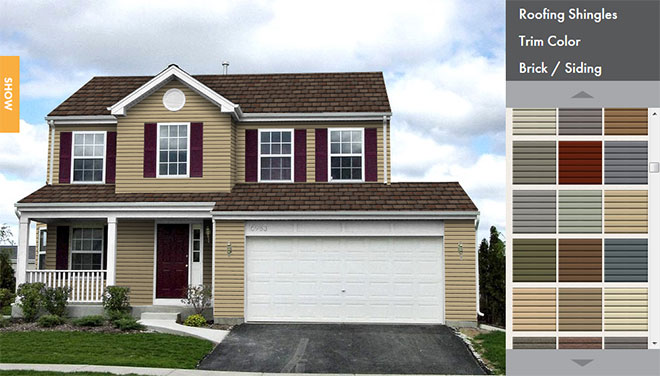Commercial TPO Single – Ply Roofing System
This Update reviews their characteristics and performance to date and clarifies some misunderstandings related to terminology.
A typical low-slope roofing system consists of three components: a structural deck, a thermal insulation barrier and a waterproofing membrane, which consists of reinforcing fibres or fabric sandwiched between two sheets of flexible matrix. The matrix material is either asphalt- or polymer-based (Figure 1). In “single-ply” membranes, the matrix is made of flexible polymer. The reinforcement provides dimensional stability for the membrane as well as strength to resist stresses in service. It is generally made of chopped short glass fibre strands packed in a mat, or continuous polyester fibre arranged in a grid or in a non-woven mat (Figure 2).
 Figure 1. Categories of low-slope roofing membranes
Figure 1. Categories of low-slope roofing membranes
 Figure 2. Reinforcement commonly used in roofing membranes: (a) random short glass fibre mat; (b) polyester scrim; (c) non-woven polyester mat
Figure 2. Reinforcement commonly used in roofing membranes: (a) random short glass fibre mat; (b) polyester scrim; (c) non-woven polyester mat
There are essentially two classes of polymer based roofing membranes: thermosets (TS) and thermoplastics (TP) (see Text Box A). Thermoplastics soften when heated (this process is reversible) but thermosets do not. Thermosets include the commonly used ethylene propylene diene monomer [also known as ethylene propylene diene terpolymer] (EPDM), while thermoplastics encompass a wider variety of roofing membranes, including thermoplastic polyolefins (TPOs). All thermoplastic roofing membranes share certain characteristics, e.g., seaming can be done by heat welding. However, for the most part, they have very different chemical, physical and mechanical properties. It is impossible to explain these differences here, but there are different ASTM material-based standards for various TP products. To avoid confusion, one should not just label all of these products simply as TP products. TPOs differ from other TPs in several respects, and thus must be handled and applied differently.
Text Box A
Thermoplastics (TP) vs Thermosets (TS)
 Schematic molecular configurations of (a) a thermoplastic and (b) a thermoset
Schematic molecular configurations of (a) a thermoplastic and (b) a thermoset
A polymer is a long-chain molecule consisting of many (poly) small repeating units (mer) (~103 – 106) joined end to end. These molecules are tangled in a random manner analogous to cooked spaghetti.
Polymers can be classified into thermoplastics (TPs) and thermosets (TSs) depending on their mechanical behaviour on heating and cooling. TPs comprise long-chain molecules held together by weak bonds (Figure a). When heat is applied, the molecules “slide past” one another and the polymer softens. On cooling, the molecules cannot slide past each other easily and the polymer hardens. TS longchain molecules, however, are linked together by small molecules via strong chemical bonds, a process sometimes referred to as vulcanization (Figure b). This three- dimensional network is so rigid that the molecules cannot move very much even when the polymer is heated. Thus, TSs do not soften when heated.
Because of these differences, TP and TS membranes are bonded differently when applied. TPs can be bonded using heat welding: the hot air melts the polymer at the seam and the two strips of membrane become fused. TS membranes are usually bonded using adhesives or tapes.
Definition of TPO
Defining “thermoplastic polyolefin” is difficult. “Thermoplastic” is a generic term in polymer science; it encompasses a class of polymers that, as mentioned above, soften when heated in a reversible process. The term “olefin” is even more generic, being an old chemical name for any molecule containing carbon-carbon double bonds (the modern name for this family of molecules is alkenes). Any polymer formed by chemically linking up many olefin molecules is termed “polyolefin.”
According to the latest draft ASTM standard for TPOs, the composition is very non-specific. The standard states that TPOs must contain more than 95% by mass of TPO polymer. The polymer itself is not defined within the standard, which states only that the sheet shall contain the “appropriate” polymers. Because of this loose definition, there is an endless list of chemicals that would fall under this standard (e.g., polyethylene, polypropylene, and isobutylene, as well as their derivatives). Ideally, manufacturers would specify the exact polymer in terms of marketing and labeling.
There are a few published papers that attempt to explain the different types of TPOs [1–4]. One point is clear, however: unlike plasticized thermoplastic membranes, TPOs do not contain plasticizers (small molecules added during compounding to increase the flexibility of the product). Therefore, the problem of plasticizer loss associated with some plasticized membranes is eliminated.
Confusion in the Market Place
TPO roofing membranes have been in service in Europe for approximately ten years. The first appearance of a “TPO-type” roofing product in the United States was around 1987. As yet, little is known about their durability.
The confusion associated with TPOs comes from both the chemical terminology and the product marketing. The latter has promoted mainly the EPDM-like characteristics of TPOs, i.e., it being like rubber with the added benefits of welded seams (which EPDMs do not have). Also promoted has been the chemical resistance attributed to the olefin component of the polymers. Unfortunately, some confusion has occurred, especially regarding the use of the term thermoplastic (TP). It is important to remember that TPOs are thermoplastic (i.e., TPs) but only some TPs are TPOs.
Benefits of TPOs
In general, TPO membranes are being marketed as a product that combines the properties of EPDM and PVC, without the associated drawbacks that the latter two materials have. In other words, they are supposed to be as UV-resistant and as heat-resistant as EPDM, and as heat-weldable as PVC.
The following benefits and characteristics have been reported for TPOs [1-3]:
-
environmentally friendly and recyclable
-
seams can be heat welded
-
available in many colours
-
resistant to heat and UV degradation
-
resistant to many chemicals
-
good cold-temperature flexibility
-
no external plasticizers added.
|
Text Box B
Tensile Testing
A good roofing membrane has to be strong enough to withstand stresses, and flexible enough to accommodate deck movement. These properties are represented by breaking strength and elongation, which can be measured by a tensile testing machine, which pulls a rectangular specimen at a constant rate. The machine plots the reaction as a stress-elongation curve. The maximum stress borne by the specimen is called the breaking strength while the elongation at which the maximum stress is achieved is called the elongation at break.
Typical tensile stress-elongation curves for a polyester reinforced TPO membrane at -40°C and at 23°C |
Performance of TPOs
TPO membranes are lighter in weight and easier to handle than the other thermoplastic membranes. But, while flexible, they have a rather rigid feel: they tend to hold their shape, and do not relax quickly. Contractors appear to be adjusting slowly to them and some say they are not “contractor-friendly.” Their comments about TPOs include the following:
-
Hot-air-welded seams are easy and clean;
-
Costs are lower than for other hot- air welded membranes;
-
Mechanically fastened systems (as opposed to loose laid or fully adhered systems) work well in recover applications without adding extra load;
-
Non-reinforced flashing membranes are easy to form for detailing;
-
Noticeable changes in color and texture occur over time;
-
Membranes respond dramatically (expansion and contraction) to temperature changes;
-
Cold welds (i.e., welds at temperatures that are not hot enough) occur frequently; the start and stop positions of the robotic welder are especially critical, as are the positions of t-seams;
-
Narrow welding window exists between cold welds and scorch/burn-through (i.e., welds at temperatures that are too hot);
-
Failure of substrate bonding adhesive is common (i.e., not sticking to membrane);
-
Membranes sometimes require solvent wipe (to clean or prime) before welding;
-
Re-welding membranes (in repair) is problematic after exposure to sun;
-
Black membranes are more difficult to weld than white ones.
Current Research Results
IRC, in collaboration with Benchmark Inc., a U.S. roofing consulting firm, initiated a five-year project in 1997 to study the long-term performance of TPO membranes. Thus far it has been found that the membranes reinforced with continuous polyester fibre scrim had significantly higher tensile breaking strength (see Text Box B) than those reinforced with random short glass fibre mat. With the polyester scrim (continuous fibre bundles arranged in a grid), the fibres bore the majority of the applied stress until failure, resulting in high breaking strength. In the case of the glass fibre mat reinforcement (chopped fibre strands packed randomly into a mat), the fibre strands flowed and aligned themselves with the polymer in the direction of the applied stress, resulting in significantly lower breaking strength — i.e., the strands moved with the membrane rather than stretching and eventually snapping as is the case with the polyester.
The breaking strength of the polyester scrim membranes was governed by the number of fibre tows (bundles) across the width of the specimen. The strength of the fibre tows was the same for all samples, independent of the surface coating. Therefore the tighter the weave of the reinforcement, the higher the breaking strength of the membrane.
The difference in weave style had an effect on how a membrane failed as well. One sample was reinforced with an uncoated polyester scrim where the intersecting tows were held together by fine, continuous polyester fibres. When the membrane was pulled in the machine direction (parallel to the length of the roll of the membrane), the fine fibres stretched and tightly held onto the tows in the cross direction ( perpendicular to the machine direction), creating high localized stresses at the intersections.
However, when the membrane was stressed in the cross direction, no localized stress points were formed, since the fine fibres held the tows in the machine direction by sandwiching instead of pulling them.
The breaking strength of the polyester scrim membranes increased by 20 – 30% as the test temperature dropped to -40°C. However, the membrane became brittle and the ultimate elongation (a measure of the membrane’s ability to accommodate deck movement) reduced more than 15 times. Since the flexibility of the polymer governs that of the membrane, it is recommended that polymers with superior cold-temperature mechanical properties (e.g., higher elongation) be used in membranes intended for cold temperature applications. The glass transition temperature (Tg) is a good criterion for choosing the right polymer (see Text Box C).
Cold temperature flexibility was monitored using Tg. It was found to be in the range of -32°C to -37°C, comparable to that of other single-ply systems (around -35°C). There was one exception — a Tg of -54°C. That sample also had the highest tensile elongation at -40°C.
Thermogravimetry (which monitors the weight change of a subject being heated over a temperature range) clearly shows that there are at least four different types of TPOs based on weight loss patterns alone. This shows again that the term “TPO” is quite generic, encompassing many different types of polymers.
|
Text Box C
Glass Transition Temperature (Tg)
When a polymer is warm, the molecular segments are constantly changing place by actively sliding or jumping, and the polymer is flexible. This is the amorphous state. When the polymer is cooled, molecular movement starts to slow. If cooling is continued, a temperature will be reached at which molecular movement stops altogether. The polymer loses its flexibility and becomes brittle. This is the glassy state. The temperature at which the transition from flexible to brittle occurs is called the glass transition temperature (Tg). Tg is a property of the polymer and is an important concept in evaluating the performance of polymer-based roofing membranes. The addition of plasticizers (small polymer molecules) during compounding helps to lower the Tg by increasing the distance between the polymer molecules and thereby softening the polymer. |
Summary
 Because of the chemical terminology involved, the non-specific chemical composition of the polymer and the marketing focus of manufacturers, there is much confusion about TPO roofing membranes.
Because of the chemical terminology involved, the non-specific chemical composition of the polymer and the marketing focus of manufacturers, there is much confusion about TPO roofing membranes.
If the ASTM task group developing the TPO standard insists on using the term “olefin” in the standard’s name, then it should consider using the name “Flexible or Thermoplastic Polyolefin” in the title, as this would be in line with the terminology used in Europe (i.e., flexible polyolefin, FPO). Furthermore, manufacturers should consider clearly stating whether their product is a polypropylene- or polyethylene-based system, to minimize possible confusion.
Looking For More Information About TPO Roofing?
Thermoplastic polyolefins are a “new generation” of single-ply roofing systems
The TPO system is one of the latest single-ply, flat roofing technologies on the market today. Low Sloped Roofing, commonly referred to as Flat Roofing, is an industry onto itself. There are thousands of configurations to choose from. There are several roof deck types, insulation requirements, roof membrane requirements and other factors complicating the selection. To simplify the process, a professional roofing contractor should be involved to assist in selection of the appropriate roof system for the particular application in new construction or replacement applications.
Looking For More Information About TPO Roofing?
Apartment buildings, town homes, condominiums—commercial properties have specific requirements and needs.
For business owners and those in industrial properties, the roofing needs can be very different from those of residential homeowners. For those consumers, commercial roofers are the ones to call, as they specialize in the specific types of roofs found on business and industrial structures.
A commercial roofing contractor understands the unique needs of multi housing communities. It is often necessary to accommodate different schedules to provide the least amount of disruption to everyone’s lives. Because every project can vary, the special requirements of each client must be considered. While it is reasonably easy to vacate a residential home for a few days if necessary, it is not quite as easy for business and commercial property owners to allow that same level of access to a work crew. A commercial roofing contractor will work with you to schedule your roofing project to allow for the least amount of disruption to your business or commercial property.
Like most roofing projects, flat roof repair is best left to experienced professionals, as leaks in a flat surface are generally more difficult to diagnose and patch – not to mention the personal safety risk you run when you take roofing matters into your own hands! Roofing or re-roofing your business or commercial property is a big investment. For more information about flat roof systems, contact a commercial flat roofing contractor.



 Click Here
Click Here Click Here To Use
Click Here To Use